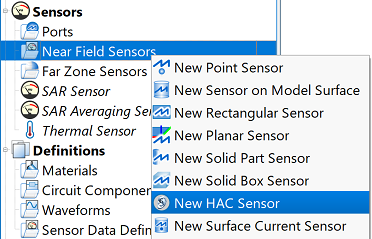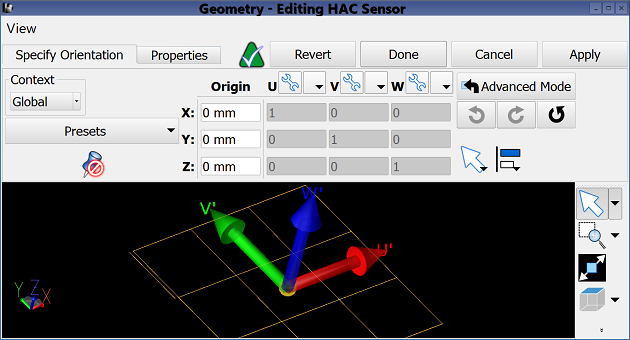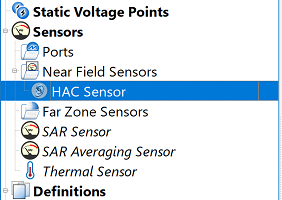
The  HAC Sensor analyzes hearing aid compatibility (HAC) based on the ANSI standards [1], [2]. It determines whether or not a wireless device, such as a cellphone, generates electrical and magnetic fields large enough to interfere with a hearing aid. In such cases, it helps evaluate the wearer's ability to adjust the device to a more suitable position. The sensor gathers data on a 5 cm by 5 cm arbitrarily oriented rectangle in free space. The resulting measure of hearing aid compatibility is an M-rating.
HAC Sensor analyzes hearing aid compatibility (HAC) based on the ANSI standards [1], [2]. It determines whether or not a wireless device, such as a cellphone, generates electrical and magnetic fields large enough to interfere with a hearing aid. In such cases, it helps evaluate the wearer's ability to adjust the device to a more suitable position. The sensor gathers data on a 5 cm by 5 cm arbitrarily oriented rectangle in free space. The resulting measure of hearing aid compatibility is an M-rating.
Users can create an HAC sensor by right-clicking on Near Field Sensors in the Project Tree, then selecting New HAC Sensor. The editor across the top of the Geometry window consists of two tabs: Specify Orientation and Properties.

Under the Specify Orientation tab, users can define the location and orientation of the HAC sensor and position the rendered 5 cm by 5 cm rectangle relative to geometry. The editor provides multiple options for making the desired changes, such as editing the Origin associated with the center of the HAC sensor. The advanced settings, direction picking tools, and alignment tools provide additional methods for adjusting all aspects of the sensor's orientation.

Under the Properties tab, users can enter a sensor identifier into the Name field and either enable or disable the sensor by selecting or deselecting the Enable HAC Sensor option, respectively.
If desired, users can determine hearing aid compatibility as defined in the 2007 standard by selecting the Also support HAC 2007 standard (in addition to 2011 standard) option [1], [2].
Four buttons provide options for completing changes to the editor:
- Revert: discards changes and restores the previously saved settings.
- Done: closes the window and saves the entered specifications, which are visible when the window is re-opened.
- Cancel: closes the window and does not save the entered specifications.
- Apply: saves the entered specifications but does not close the window.
References
- "American National Standard Methods of Measurement of Compatibility between Wireless Communications Devices and Hearing Aids," in ANSI C63.19-2011, vol., no., pp.1-140, 27 May 2011, doi: 10.1109/IEEESTD.2011.5782919.
- "American National Standard Methods of Measurement for Hearing Aid Compatibility with Wireless Communications," in ANSI C63.19-2007 , vol., no., pp.1-141, 8 June 2007, doi: 10.1109/IEEESTD.2007.371285.



